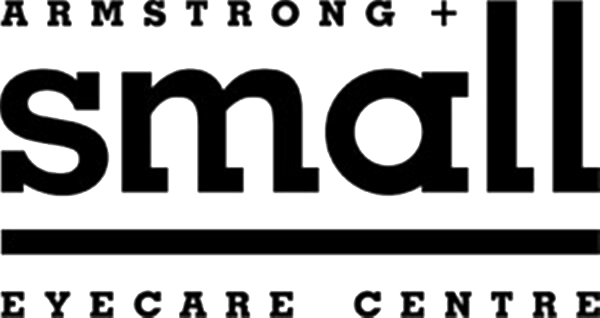Dr. Matt Lepage answers common questions about Scleral Contact Lenses
1. What are scleral contact lenses?
Scleral lenses are specialty contact lenses that are much larger diameter than other contact lenses. Because of their large diameter, they are able to vault over the cornea (the outer 'window' of the eye) and land on the sclera (the white part of the eye). A saline solution is used to fill the space between the lens and the cornea, which then forms a soft cushion of fluid between the cornea and the lens, and helps to smooth out any irregularities in the cornea to improve vision.
2. Who is a good candidate for scleral lenses?
Almost anybody can wear a scleral lens for vision correction, but typically they are reserved for those with certain corneal diseases (ie: Keratoconus), or for those who have had corneal transplants, or if trauma to the front of the eye has resulted in irregular curvature to the cornea.
3. What eye health issues do scleral contact lens treat (i.e. keratoconus, corneal transplants, dry eyes? etc.)?
Scleral lenses can be used to improve vision in those with irregular corneal curvatures (ie: those with keratoconus or post-corneal graft/transplant patients) but they can also been used to help those with severe dry eye. If all other dry eye treatment modalities have failed, a scleral lens can sometimes offer some relief to dry eye patients. Since a saline solution is used in between the cornea and the lens, the eye is in essentially in constant contact with a big pool of artificial tears.
4. What types of scleral lens are there?
There are several types of scleral lenses available on the market. We have become particularly fond of the 'ZenLens' from Alden Optical / Bausch & Lomb Specialty Lens Division. We find that it is very easy to modify/tailor the lens to fit each individual eye. With some lenses on the market, adjusting one aspect of the lens (ie: peripheral curvature or central vault) can sometimes affect other aspects to the lens and further adjustments need to be made. Alden Optical is able to adjust one element of the lens without skewing other characteristics of the lens.
5. Are scleral lenses typically covered by medical or vision insurance?
Yes and No. Manitoba Health does not cover scleral lenses or the associated fitting fees. However, some private insurance plans do provide some coverage. Every plan is different, so contacting your provider to inquire about scleral lens coverage would be best. 6. What are the benefits of Scleral Lenses over other kinds of Contact Lenses? Scleral lenses are able to improve vision in certain conditions where more traditional soft contact lenses are not effective. Once trained on how to safely insert and remove a scleral lens, most wearers find that they are very comfortable as well.
7. How often should I replace my Scleral Contacts?
With careful lens hygiene/cleaning, a scleral lens to last years before needing to be replaced. 8. Are different types of Scleral lenses used at earlier v. later stages of the onset of keratoconus?In the very early stages of corneal disease (ie: Keratoconus) a soft disposable contact lens can usually be worn comfortably and can offer satisfactory vision for most patients. As keratoconus progresses, the fit/comfort/vision offered by disposable contact lenses is often compromised, and a scleral lens could then be considered. The timing on switching to a scleral lens is often dictated by patient symptoms and/or visual performance.
9. Sometimes the term "scleral lenses" (or "sclera lenses") also is used to describe special-effect contact lenses that dramatically alter the appearance of the wearer's eyes - used in movies - Explain?
Those worn in movies are the same general design as the ones we would use in our office. However, special effects contacts in movies would be carefully fit by eye care professionals rather than simply purchased 'off the rack' at a novelty store or online. DO NOT BUY SCLERAL LENSES WITHOUT CONSULTING AN EYE CARE PROFESSIONAL.
10. At what age can a child begin wearing Scleral Lenses?
There is no firm age guideline on when to begin fitting scleral lenses. The main limitation in younger patients is their dexterity and ability to insert/remove the lenses, as well as having a large enough fissure size (eye opening) to allow a scleral lens to fit. At 16-17mm in diameter, a scleral lens would likely be too large to easily fit into a young child's eye, and would require special training to insert/remove safely. As we continue to grow, our eye opening also increases slightly, allowing for easier scleral lens insertion.
11. What is the typical cost of Scleral lenses?
Why are they higher cost than regular contacts? Scleral lens pricing can vary depending on exactly what lens options are required, but scleral lenses as well as the scleral lens fitting process do cost more than that for soft disposable contact lenses/lens fitting. This is due to the fact that a scleral lens is a more durable, advanced lens than a soft disposable. However, over time, with careful lens hygiene/cleaning, a scleral lens can actually cost less than wearing soft disposable lenses. The fitting process is MUCH more involved for a scleral lens than for a soft disposable. We employ various imaging techniques; OCT imaging, corneal topography, biomicroscopy with fluorescein/cobalt blue light, etc. As well, numerous sessions are required to successfully fit a scleral lens, compared to just one or two visits to fit a disposable lens.
12. I have had issues in the past with contact lenses being uncomfortable, do you recommend Sclerals?
Depending on the reason for previous lens discomfort, a scleral lens may be more comfortable to wear than a disposable contact lens. The insertion and removal of a scleral lens can sometimes be a bit of a hurdle initially, but once a patient is proficient with this, they generally note excellent comfort with a scleral lens.


